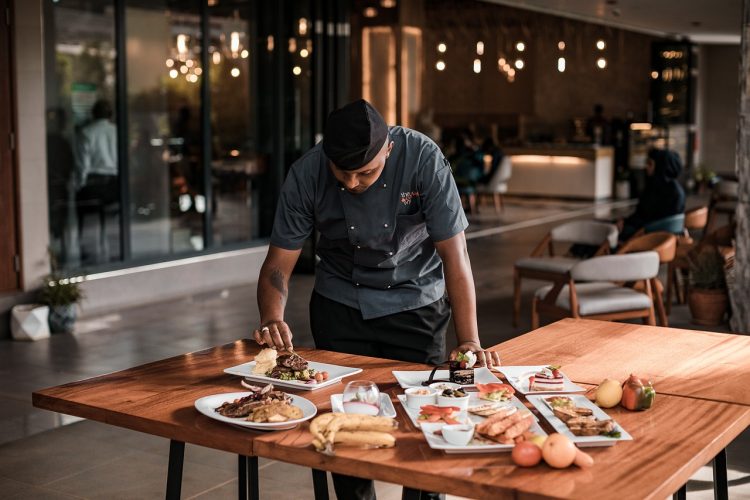Cooking chicken might seem straightforward, but achieving that perfectly juicy texture can be a challenge. All too often, chicken breasts end up dry, overcooked, and lacking in flavor. Whether you’re cooking a whole bird or just a few pieces, knowing how to keep the meat moist is key to transforming an everyday meal into a delightful experience. Here are essential techniques, tips, and recipes for cooking perfectly juicy chicken every time.
1. Start with High-Quality Chicken
The foundation of a juicy chicken starts with the quality of the meat itself. Whenever possible, choose fresh, high-quality chicken, ideally organic or free-range. These chickens tend to have more natural flavors and are less likely to dry out when cooked compared to conventionally raised poultry. Avoid frozen chicken if you can, as the freezing process can draw moisture out of the meat, leading to a drier finished dish.
2. Brining for Moisture and Flavor
One of the best ways to ensure juicy chicken is to use a brine. Brining helps infuse the chicken with both moisture and flavor, making it far more succulent when cooked. To create a basic brine, dissolve a quarter cup of salt in four cups of water. Add any additional aromatics you like, such as smashed garlic cloves, peppercorns, or a few sprigs of herbs like rosemary or thyme. Submerge the chicken in the brine for at least 30 minutes, though leaving it for a few hours (or overnight) will yield the best results. Brining is especially effective for lean cuts like chicken breasts, which are more prone to drying out.
3. Proper Seasoning is Key
Seasoning your chicken well before cooking is critical to locking in flavor. After brining, make sure to pat the chicken dry with paper towels. This helps the skin crisp up if you’re roasting or pan-searing. Season generously with salt, pepper, and any spices or herbs you love. Paprika, garlic powder, onion powder, thyme, and lemon zest are all excellent choices for adding layers of flavor. Don’t forget to season inside the cavity if you’re roasting a whole chicken, as this helps to evenly distribute the flavor throughout the bird.
4. Using the Right Cooking Method
Choosing the right cooking method for the type of chicken you’re preparing is crucial. Different cuts require different approaches to maximize juiciness.
- Chicken Breasts: Chicken breasts are notorious for drying out because they are so lean. To keep them juicy, consider cooking them over medium heat on the stovetop or baking them with a bit of moisture. A quick sear in a hot skillet followed by finishing in the oven is a great way to achieve a tender breast. Alternatively, poaching chicken breasts in broth or water keeps them moist and flavorful.
- Chicken Thighs: Chicken thighs are more forgiving because they have a higher fat content. They can handle longer cooking times without becoming dry. Thighs are perfect for slow-cooking, braising, or even grilling. Cooking thighs on medium-high heat with the skin on can give you crispy, golden skin while keeping the meat juicy.
- Whole Chicken: When roasting a whole chicken, use a method that incorporates moisture. Stuffing the cavity with aromatic vegetables (like onions, garlic, and lemon) and herbs can help infuse the meat with flavor and retain moisture. Start roasting at a higher temperature (around 425°F) for the first 15-20 minutes to crisp up the skin, then reduce the temperature to about 375°F to finish cooking. Basting the chicken occasionally also helps keep it juicy.
5. Don’t Skip the Resting Time
Once your chicken is finished cooking, it’s tempting to cut right into it, especially when it smells so good. However, resting the chicken before slicing is an essential step. Resting allows the juices to redistribute throughout the meat, ensuring every bite is tender and moist. For chicken breasts, let them rest for 5-10 minutes. For a whole chicken, aim for 15-20 minutes. Cover the chicken loosely with foil to keep it warm during the resting process.
6. Sous Vide for Foolproof Results
If you have access to a sous vide machine, this cooking method can guarantee juicy chicken every single time. Sous vide involves cooking vacuum-sealed food in a water bath at a precise temperature. For chicken breasts, setting the sous vide to 145°F and cooking them for about 90 minutes results in perfectly cooked meat that is tender and moist. After sous vide cooking, you can quickly sear the chicken in a hot skillet to add color and flavor to the exterior.
7. Keep an Eye on Internal Temperature
To ensure that your chicken is perfectly cooked, use an instant-read thermometer to check the internal temperature. Chicken should reach an internal temperature of 165°F. When cooking a whole bird, insert the thermometer into the thickest part of the thigh without touching the bone. For chicken breasts, the thickest part of the meat should read 165°F. Avoid cooking beyond this temperature, as overcooked chicken will lose moisture and become tough.
8. Cooking Chicken with Moisture-Retaining Techniques
There are several cooking techniques that help retain moisture while cooking chicken. Here are a few favorites:
- Braising: This involves searing the chicken first, then cooking it slowly in a flavorful liquid like broth, wine, or tomato sauce. Braising is an excellent choice for bone-in cuts like thighs or drumsticks, as it keeps the meat juicy and tender.
- Poaching: Poaching chicken in broth or water is a gentle cooking method that keeps the meat moist and tender. Add aromatics like garlic, bay leaves, and peppercorns to the poaching liquid for added flavor. Once poached, the chicken can be used in salads, sandwiches, or any recipe where you need cooked chicken.
- Baking with a Cover: When baking chicken, covering it with foil or a lid traps steam, helping to retain moisture. Baking chicken with vegetables or in a sauce also ensures it stays juicy throughout the cooking process.
9. Use Marinades and Buttermilk for Tenderness
Marinating chicken is a great way to infuse flavor and add moisture, especially if you’re grilling or roasting. A marinade with an acid component (like lemon juice, vinegar, or yogurt) will help tenderize the meat. Just be careful not to over-marinate—about 30 minutes to two hours is plenty for most chicken cuts. Buttermilk is particularly effective for keeping chicken tender and is often used for fried chicken recipes. The lactic acid in buttermilk helps to break down proteins and ensures juicy, flavorful meat.
10. Cooking Chicken with Skin On
If you’re cooking chicken that still has the skin, leaving the skin on during cooking helps keep the meat beneath it juicy. The skin acts as a barrier, locking in moisture as the chicken cooks. You can always remove the skin afterward if you prefer not to eat it, but cooking with the skin on is one of the best ways to ensure your chicken doesn’t dry out. For extra flavor, rub herbs and butter under the skin before cooking.
11. Chicken Thighs: The Juicy Champion
When in doubt, opt for chicken thighs over breasts. Chicken thighs are inherently juicier due to their higher fat content, which means they are less likely to dry out during cooking. Whether baked, grilled, or braised, thighs are a versatile cut that can handle a range of cooking methods while staying moist and tender. For an extra burst of flavor, try seasoning chicken thighs with smoked paprika, cumin, and garlic, and bake them until golden brown.
12. Resting in Its Own Juices
After cooking, rest the chicken in its own juices to further enhance its flavor. If you’ve roasted a whole chicken, place it on a cutting board with a shallow well, and pour the pan juices over the top while it rests. This step allows the flavors to meld, giving you juicy, flavorful meat when it’s time to carve and serve.
13. Butter-Basting for Maximum Flavor
Butter-basting is a technique often used for steak, but it works wonders for chicken as well. When cooking chicken in a skillet, add a couple of tablespoons of butter, along with herbs like thyme or rosemary and a few cloves of garlic. Once the butter is melted and aromatic, use a spoon to baste the chicken continuously for the last few minutes of cooking. This not only keeps the chicken moist but also adds an extra layer of rich flavor that makes the meat irresistible.
Cooking perfectly juicy chicken takes practice, but by following these techniques and understanding what keeps the moisture locked in, you can ensure your chicken turns out tender and flavorful every time. Whether you’re grilling, roasting, poaching, or searing, these methods will help you master the art of cooking juicy chicken, making even a simple weeknight meal feel special.










